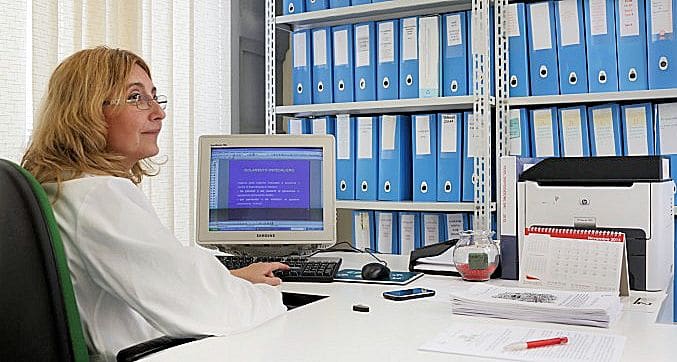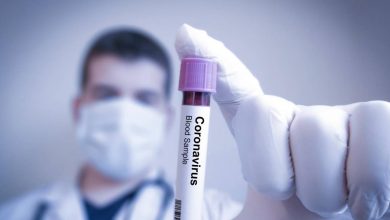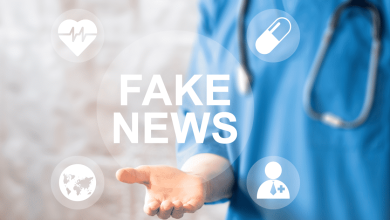
How has the medical profession changed in recent decades? How has the relationship between doctor and patient changed over time, especially in hospitals? An article that recently appeared in the New England Journal of Medicine, signed by David I. Rosenthal and Abraham Verghese, leads to a reflection on the evolution (or involution?) of the complex bond between doctor and patient.
In a bygone era, the work of the hospital doctor was mainly done at the bedside, where doctors, assistants and students met and exchanged impressions and opinions. The fulcrum of the doctor-patient relationship lay in human contact, in the doctor's ability to examine a body even through his own senses, in the ability of the human hand to touch, diagnose, cure. It was a sort of ritual, a clear message that doctors conveyed to patients. The opportunity to get to know the patients during the hospitalizations was easily created and the medical records were made of paper, even if they were often indecipherable.
 Modern medicine has brought with it something of a revolution; times and procedures have changed and the nature of the medical profession has changed as well. Medical records are no longer affixed to the patient's bedside but, residing inside a computer, they consist of a collection of data, sequences of drop-down menus and text fields.
Modern medicine has brought with it something of a revolution; times and procedures have changed and the nature of the medical profession has changed as well. Medical records are no longer affixed to the patient's bedside but, residing inside a computer, they consist of a collection of data, sequences of drop-down menus and text fields.
The advent of the electronic age, which on the one hand has reduced the time needed to obtain the results of analyzes or radiological examinations, on the other hand has not increased the time spent with patients. Recent estimates indicate that doctors and medical students often spend more than 40-50% of their day in front of a computer screen filling out documents or reviewing medical records; much of the remaining time is used to coordinate care, perhaps over the telephone, with other specialists, pharmacists, nutritionists, primary care offices, family members, social workers, nurses, etc. Few of these meetings take place in person and, increasingly, given time constraints, the doctor does not see patients with his team.
Today the classic visit is often replaced by a briefing around a computer, during which images on screens, x-rays, reports, numbers, data are examined. The new technological doctor is often reduced to a mere prescriber, who sometimes carries out telephone visits or diagnoses online. In a nutshell, there is no physical contact between doctor and patient: despite the rhetoric on the centrality of the patient, the patient actually runs the risk of no longer being at the center of the system.
The doctor's attention is therefore often diverted from the lives, bodies and souls of the people entrusted to his care, to the point that the figure of the doctor focused on the screen rather than on the patient is now a cliche cultural. Similarly, the client has almost become an icon of the patient in a "binary" guise; Verghese has coined a word for this digital representation of the patient: theiPatient. Especially in the United States, the entire health care system relies on this virtual entity and provides incentives for its creation and maintenance; according to reports on the quality of hospitals in the USA, it would seem that theiPatient get uniformly great care, but real patient experiences are another matter entirely.
Even the skills learned by medical students and doctors today are not the traditional ones, necessary to take a good history or to reconstruct the patient's clinical history, but rather those to learn the art of a good biopsy examination, manage documentation, acceptances and resignations in the electronic age.
 The patient himself is now convinced that his body coincides with the images obtained from diagnostic technologies and from the sequences of numbers generated by the devices used to analyze blood. In this way, he thinks he can keep his health under control by undergoing blood tests, ultrasounds or MRIs: one comes to think that it is better to have a good X-ray rather than a good doctor.
The patient himself is now convinced that his body coincides with the images obtained from diagnostic technologies and from the sequences of numbers generated by the devices used to analyze blood. In this way, he thinks he can keep his health under control by undergoing blood tests, ultrasounds or MRIs: one comes to think that it is better to have a good X-ray rather than a good doctor.
On the other hand, doctors are increasingly dissatisfied with their work, often embittered by too much time spent transcribing and translating information to be entered into a computer and by the fact that, in this sense, work never stops. The RAND Study"Factors Affecting Physician Professional Satisfaction and Their Implications for Patient Care, Health Systems, and Health Policy”, commissioned in 2013 by the American Medical Association (AMA) analyzed the phenomenon in six American states, highlighting the negative effect produced by the computerized management of medical records on the morale of many doctors. The study found high levels of stress among physicians, largely related to an increase in regulatory requirements, administrative tasks and the adoption of electronic health records. According to survey, the doctors 81% said he was satisfied with his work, but 47% described it as extremely stressful and 19% spoke bluntly of burnouts. Many of those interviewed underlined how the computer, instead of being a tool of help and simplification, has actually become an obstacle that takes time away from patient care.
These findings underscore the importance of reflecting on what the medical profession once was, what it is now, and what it should be or is likely to become. Regardless of prestige, in the past that work has been performed under conditions and quality standards that would now be unacceptable; today it is practiced in a system that is certainly safer and more efficient, with measurable results. Yet, expectations seem largely unfulfilled.
If the meaning of the medical profession is to be restored, rather complex global changes are needed, starting with re-establishing a dialogue that includes those working on the front lines of medicine. Perhaps the greatest opportunity to improve physician job satisfaction in the short term lies in rebuilding traditional procedures and physical spaces to foster the kind of human connections that are truly useful: between physicians and patients, between physicians and physicians, between physicians and nurses. We should go back to the direct relationship with patients, communicating with their families and nurses, rethinking the man-machine interface and merging the real patient with theiPatient.
Technology certainly cannot restore the professional satisfaction of doctors; it is necessary to rebuild the sense of teamwork, of community, strengthening the ties that unite doctors as human beings and restoring some rituals full of meaning for doctor and patient. The solutions will not be simple, as many problems are trapped in the high cost of health care and obstacles to health care reforms. But we can begin by recalling the original purpose of doctors: to witness the suffering of others, to comfort and offer cure. That remains the true privilege of the medical profession.
To know more:
– Read theitem Nominal ISOMERs (Incorrect Spellings Of Medicines Eluding Researchers) – variants in the spellings of drug names in PubMed: a database review on the New England Journal of Medicine
Related news: Doctors spend too much time on the computer





